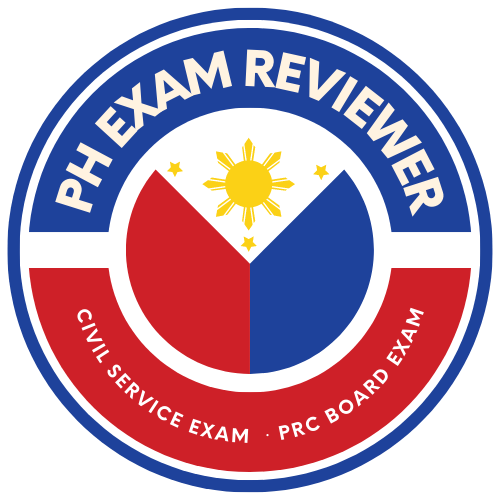Introduction
LTO Comprehensive Driver’s Education (CDE) is a vital component of obtaining or renewing a driver’s license. It equips drivers with the necessary knowledge and skills to ensure road safety and responsible driving behavior. As part of the CDE program, a practice test is available to help individuals prepare for the final exam.
The CDE practice test serves as a valuable tool for aspiring drivers and those seeking to renew their licenses. By taking the practice test, individuals can assess their understanding of road safety, traffic laws, and driving etiquette. It allows them to identify areas where they may need further study or improvement.
Benefits of taking the CDE practice test include:
- Self-assessment: The practice test enables individuals to gauge their knowledge and readiness for the final exam. It helps them identify areas of strength as well as areas that require additional review.
- Familiarization: By taking the practice test, individuals become familiar with the format and structure of the actual exam. This familiarity reduces anxiety and builds confidence, leading to better performance on the final exam.
- Improved Performance: The practice test allows individuals to identify gaps in their knowledge and focus on areas that require more attention. As a result, they can enhance their understanding of road safety measures, traffic laws, and other critical topics covered in the CDE course.
- Increased Success Rate: Research has shown that individuals who take practice tests have a higher success rate on the final exam. Regularly practicing with mock tests enhances retention and improves overall performance during the actual exam.
Taking the CDE practice test is an essential step in comprehensive driver’s education. It provides individuals with an opportunity to:
- Assess their knowledge
- Familiarize themselves with the exam format
- Improve their understanding of road safety measures
- Increase their chances of passing the final exam successfully
Conclusion
In conclusion, here are the key takeaways:
- Take advantage of the CDE practice test to enhance your knowledge and increase your chances of passing the exam.
- Emphasize the importance of comprehensive driver’s education in ensuring road safety and responsible driving behavior.
FAQ Section
- What type of helmet should a rider must use?
- A standard motorcycle helmet compliant to specifications of DTI.
- This ensures adequate protection for the rider’s head during motorcycle rides.
- Registration of motor vehicle may be suspended if:
- Motor vehicle is found to be unsightly or road unworthy.
- Unsightly vehicles may contribute to aesthetic degradation and are subject to suspension.
- A 30-day Suspension Of the driver’s license shall be imposed if:
- The driver fails to pay the corresponding penalty of the apprehension within 15 days.
- Timely settlement of penalties is crucial to avoid prolonged license suspension.
- Which of the following statement is true?
- A DL holder with authority to drive vehicle with manual transmission (MT) is allowed to drive Automatic Transmission (AT).
- This rule allows flexibility for drivers with manual transmission experience to operate automatic vehicles.
- When parking, how many meters is allowed from the location of a fire hydrant?
- More than four meters of the fire hydrant.
- Maintaining a safe distance from fire hydrants ensures accessibility during emergencies.
- Registration of motor vehicle may be suspended if:
- Motor vehicle is capable of causing excessive damage to public roads.
- Vehicles posing risks to public infrastructure are subject to registration suspension.
- If your vehicle is stopped at an intersection, in what color of traffic light can you compose your text messages?
- None, texting prohibited even if the vehicle is stopped at an intersection.
- Ensuring full attention to traffic signals mitigates the risk of accidents.
- When does a driver need to wear a helmet when driving a motorcycle?
- For long or short drives and in any type of road or highway.
- Helmets should be worn at all times during motorcycle operation for safety.
- Are you allowed to overtake on a broken line?
- Yes, but with care and caution.
- Overtaking on broken lines is permissible provided it’s done safely.
- Can a driver use a photocopy of driver’s license while driving?
- No.
- Original licenses are required to ensure driver’s identity and credentials.
- Where do you need to display your Plate number?
- One in front and one rear of the vehicle.
- Visible plate numbers facilitate vehicle identification and compliance with traffic regulations.
- This warning sign means that the driver must:
- Be aware and stop for PWD crossing.
- This sign alerts drivers to be cautious and yield to pedestrians with disabilities.
- What shall be the color of auxiliary lamps installed at the front of a vehicle?
- White or yellowish white.
- These colors enhance visibility and safety during low-light conditions.
- Where should the number plate of a motorcycle be displayed?
- At the rear of the motorcycle.
- Rear placement of the plate ensures clear identification of motorcycles by authorities and other drivers.
- Can you drive a motorcycle if your license bears DL Code B?
- No.
- DL Code B does not authorize motorcycle operation; riders must have appropriate endorsements.
- Your license has just expired. Are you still authorized allowed to drive?
- No.
- Driving with an expired license is illegal and can result in penalties.
- When may you lend your driver’s license?
- Under no circumstances.
- Lending licenses compromises security and legality, leading to potential legal consequences.
- A fabricated storage compartment fitted behind the seat of a motorcycle is called:
- Customized Top-Box.
- Top-boxes provide convenient storage solutions for motorcycle riders.
- Can a driver be given a ten-year validity license if he/she has traffic violation?
- No.
- Violations affect the validity period, and ten-year licenses are not granted to those with violations.
- What is the primary responsibility of a driver in terms of a road crash?
- Aid the victim.
- Providing assistance to crash victims is a fundamental duty of responsible drivers.
- What type of motor vehicles are covered by Motor Vehicle Users Charge Law?
- All motor vehicles registered with LTO.
- The law applies to all registered vehicles to fund road maintenance and development.
- Is it allowed to drive a motorcycle on a public road pending release of the Certificate of Registration?
- No.
- Operating a motorcycle without proper registration violates road regulations.
- What should you watch out for when a rider is approaching at an intersection?
- Hand signal or turn signal.
- Signals help anticipate the rider’s intentions, promoting safer intersections.
- Who are responsible if a motorcycle was used in the commission of a crime?
- Owner, driver, and backrider.
- All parties involved in the motorcycle’s operation may be held accountable for criminal activities.
- Are you allowed to traverse or cross double solid lines?
- No.
- Crossing double solid lines is prohibited for safety reasons and traffic flow management.
- This traffic sign means:
- Two-way traffic.
- Indicates that the road ahead accommodates traffic in both directions.
- Who has the authority to confiscate a driver’s license during a normal traffic violation?
- LTO Law Enforcement Officers or LTO Deputized Agents.
- Authorized personnel can confiscate licenses as part of enforcing traffic regulations.
- What is the initial Driver’s License Classification for applicants of a new license?
- Non-professional driver’s license (NPDL).
- NPDL is the entry-level license for drivers without professional driving qualifications.
- What should a driver do when driving on a public road?
- Follow speed limit and driving hours.
- Adhering to speed limits and driving hours ensures safety and compliance with regulations.
- Under the Children’s Safety on Motorcycles Act, a child below 18 years old can’t ride in a two-wheeled motorcycle on public roads unless:
- The child can comfortably reach his/her feet on the standard footpeg of the motorcycle, his/her arms can reach around and grasp the waist of the motorcycle driver, and he/she is wearing the standard protective helmet.
- The law prioritizes children’s safety and mandates specific conditions for their motorcycle travel.
- A storage compartment attached at the side of the motorcycle not higher than the seat of the motorcycle that is considered a motorcycle accessory is:
- Customized top-box.
- This type of storage provides additional convenience for motorcycle riders.
- What violation may be applied if a driver passed the three-field sobriety test?
- The initial traffic violation.
- Passing sobriety tests does not exempt drivers from other traffic violations they may have committed.
- When can a child be exempted from being seated in a child restraint system?
- If the child requires immediate medical treatment.
- Safety considerations may allow temporary exemptions for medical emergencies.
- How many hours may a Temporary Operator’s Permit (TOP) be used as a temporary driver’s license?
- 72 hours.
- Temporary permits provide short-term driving privileges before obtaining a regular license.
- When can a driver be allowed to use his mobile phone while driving?
- Calling authorities to report a crime or road crash.
- Emergency situations may warrant the use of mobile phones while driving.
- What shall be the validity of a license that a driver may have if he/she has a traffic violation at the time of renewal?
- 5 years.
- Renewal validity is standard, regardless of past violations.
- Which of the following is the objective of Motor Vehicle User’s Charge Law?
- To fund and prevent premature deterioration of the road.
- The law aims to ensure sustainable road maintenance and development.
- What is the maximum validity of a license that a driver may have if he/she has no traffic violation at the time of renewal?
- 5 years.
- Violation-free drivers are eligible for maximum renewal periods.
- Can a driver who had the opportunity to avoid a road crash and neglected to avoid such road crash be jointly held liable?
- Yes.
- Negligence contributing to road crashes may result in shared liability.
- Can a driver be given a 10-year validity license if he/she has traffic violation/s?
- No.
- Violations impact the validity period, preventing the issuance of extended licenses.
- What are the three field sobriety tests?
- Eye test, walk and turn, one leg stand.
- These tests assess a driver’s impairment level due to alcohol or drugs.
- What shall the driver do after overtaking another vehicle?
- Return to the original lane with care.
- Safely merging back into the original lane maintains traffic flow and safety.
- Under R.A. No. 11229, what is the allowable age that a child may sit in the front passenger seat of a car?
- More than 12 years old.
- The law aims to ensure children’s safety by restricting front seat access to older individuals.


